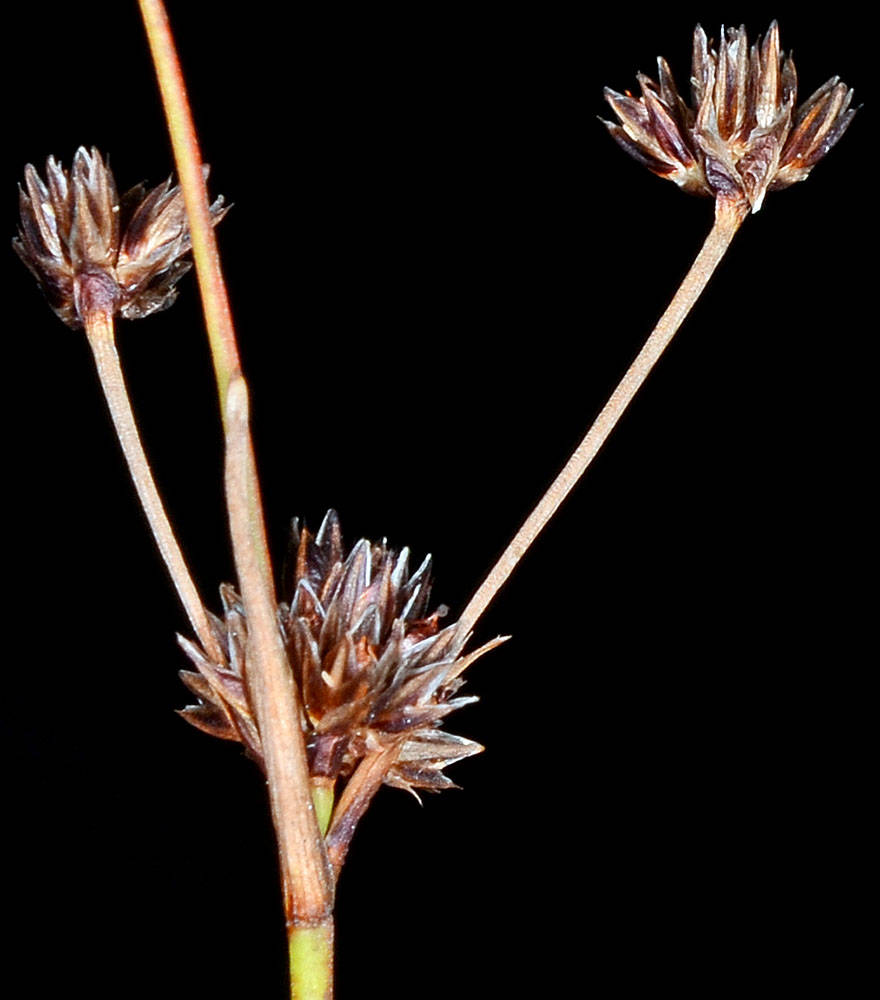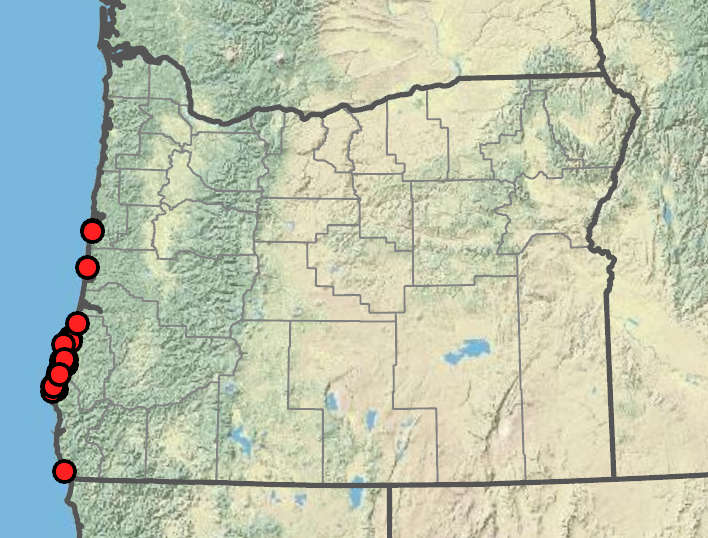Juncus planifolius
Juncus kelloggii
flat-leaved rush, New Zealand rush
Kellogg's rush
flat; grass-like;
auricles absent.
capillary;
basal.
1–35 clusters; clusters 3–10-flowered, sometimes bearing leafy bulblets;
inflorescence bracts inconspicuous, membranous; shorter than or equaling inflorescence.
1 terminal cluster, with 1–4 flowers per cluster;
inflorescence bracts inconspicuous;
flowers subtended by 2 bractlets;
bractlet tips usually acute (acuminate).
tepals 6, 1.8– 3.2 mm, dark brown to black; smooth;
stamens 3;
filaments 0.8–1.1 mm;
anthers 0.4–0.6 mm, yellow;
style 0.2–0.3 mm.
tepals (4)6;
midveins dark reddish;
tips acute to acuminate;
stamens (2)3;
filaments 0.7–1.3 mm;
anthers 0.3–0.5 mm;
styles 0.2–0.5 mm.
elliptic to ovoid; shorter than or equaling the tepals, brown to dark brown, 1-chambered.
equaling or slightly longer than the tepals, dark red;
apex acute to acuminate.
0.3–0.45 × 0.2– 0.3 mm, reticulate, apiculate.
approximately 50 per capsule, 0.35–0.55 × 0.25– 0.35 mm, longitudinally striate (obvious at 30×), apiculate.
=34.
Juncus planifolius
Juncus kelloggii
Muddy or sandy shores, sometimes in shallow water, ditches, cranberry farms, peatlands, damp dune hollows. 0–50 m. Est. CA; HI, South America; Australia, Ireland, New Zealand. Exotic.
Juncus planifolius was first collected in Oregon in 1988 and is rapidly spreading. It is native south of the equator.
Creek banks, floodplains in wet prairie, swales, pool margins. 100–1900m. BR, Sisk, WV. CA, NV, WA; north to southern British Columbia. Native.
Peter Zika
Peter Zika
- Local floras:
BC,
CA,
OR,
WA
- Local Web sites:
CalFlora,
CalPhotos,
Flora NW,
PNW Herbaria
WildflowerSearch
iNaturalist (observations)
USDA Plants Database
- LBJ Wildflower Center
- SEINet
- Plants of the World Online
- Encyclopedia of Life
- Wikipedia
- Google Image Search


